11 Best Substitutes for Thai Basil
When you buy through our links, The Breslin may earn an affiliate commission. Learn more
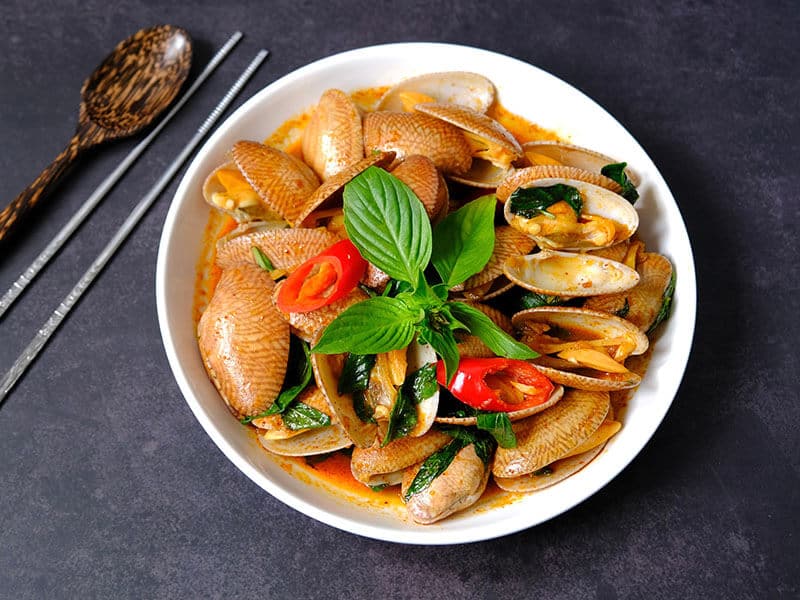
Thai basil substitutes? Asian food has been especially welcomed lately because of the delicious, aromatic, and refreshing flavor. If you are a Thai or Vietnamese food lover, I bet Thai basil is one of the items you will want to have on your hand all time.
This aromatic herb, like French tarragon, is the treasure of Thai and many other Asians. You cannot find Thai basil in the nearby grocery store? Don’t freak out. I’m here to help you! In this article, I will reveal 11 brilliant substitutes for Thai basil that work well in your recipes!
Now, what are you waiting for? Quickly scroll down for more detailed information!
Thai Basil – Southeast Asia’s Aromatic Herb
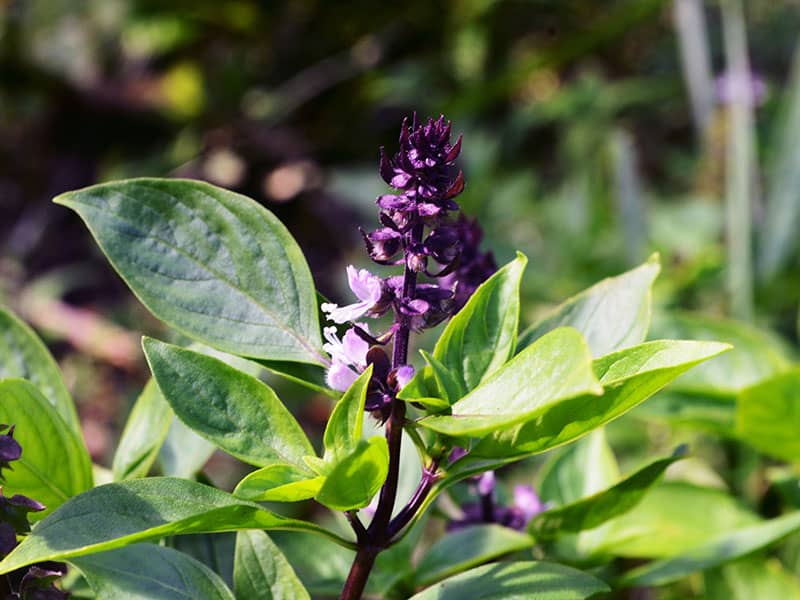
Despite being one of the most popular herbs in Asia, I guess Thai basil may seem strange for some of you out there. Let’s check out this section to get more insights about this herb.
1. What You Should Know About Thai Basil
While Western cuisine is more familiar with sweet basil, Asian, in particular, Southeast Asian cuisine calls for Thai basil in a wide range of its delicacies. (1)
Thai basil, sometimes also called anise basil or licorice basil, is one of the varieties in the Ocimum basilicum species, belonging to the big family Lamiaceae (mint family). It is often found in Asia, cultivated mostly in Southeast countries.
Different from sweet basil, Thai basil has light to dark purple stems with shiny green but more narrow leaves. When it gets older, the pink-purple flowers will grow on the top of the shoots. And it especially thrives in warm and humid tropical climates.
Thai basil is much sturdier than most other popular basil varieties. Hence, it often holds up better in the long cooking process. And since Thai basil gives off a pleasant taste, it is present in many famous Asian recipes.
Watch this video to know more:
2. What Is The Taste Of Thai Basil?
In the flavor profile, Thai basil gives off a strong, intense, but aromatic and comfortable smell. Its taste is described to have a slightly peppery tone with a mixture of anise, licorice, and cinnamon flavor.
When you eat it raw with a large pinch, you can also feel a little note of tartness and a hint of earthy and sweet flavor. Many people say that sometimes Thai basil tastes are reminiscent of pesto and clove as well. It is quite pungent but far beyond offending you.
3. Various Recipes Call For Thai Basil
With a fragrant flavor, Thai basil is used in many recipes among Asian countries, especially Thailand and Vietnam. It also shows its face up to all kinds of dishes, including sauces, broths, stir-fries, stews, curries, rolls, and even drinks.
If you are a huge fan of Pho – a Vietnamese iconic beef noodle soup, you absolutely will realize this herb. Thai basil is added at the serving time as a flavor-pushing item. Moreover, it is also used in Thai chicken soup, Thai green curry chicken soup, and Thai tomato soup.
Also, “bò kho” (Vietnamese beef stew), “bún bò Huế” (another Vietnamese beef noodle), and pad kra pao gai (Thai basil chicken) also make this herb one of their important condiments.
In Taiwan cuisine, Thai basil is a part of sanbeiji – one of the iconic dishes of Jiangxi cuisine. It also appears in “cha kreung satch moan” – a Cambodian lemongrass chicken stir-fry.
Not only that, when combined with tart and unripe mango with savory sauces, you will have a refreshing and appetizing salad too.
Thai basil is one of the main ingredients of Thailand’s traditional pad kra pao gai. See the video below:
Equivalent Portion Of Thai Basil And Its 11 Substitutes
Here, I will put a conversion chart that summarizes the detailed ratios between Thai basil and all 11 of its replacements. Take a glance and save them to your note.
| Substitutes | Ratio (Thai Basil/Substitutes) |
| Sweet Basil | 1 tablespoon of Thai basil = 1+½ tablespoons of sweet basil |
| Holy Basil | 1 tablespoon of Thai basil = 1 tablespoon of holy basil |
| Tarragon | 1 tablespoon of Thai basil = 1 tablespoon of tarragon |
| Star Anise | 1 tablespoon of Thai basil = 1 tablespoon of star anise |
| Fennel | 1 tablespoon of Thai basil = ½ tablespoons of fennel leaves (bulbs) |
| Mint Sprigs | 1 tablespoon of Thai basil = 1 tablespoon of mint sprigs |
| Lemon Basil | Small amount first and increase gradually |
| Oregano | Small amount first and increase gradually |
| Cilantro | 1 tablespoon of Thai basil = 1+½ tablespoons of cilantro |
| Spinach | 1 tablespoon of Thai basil = 2-3 tablespoons of spinach leaves |
11 Top-Recommended Thai Basil Substitutes For Your Recipes
In this main part, I will introduce you to 11 Thai basil substitutes and give you clear instructions while using them in your recipes. Read and consider carefully to have delicious dishes.
1. Sweet Basil (Italian Basil)
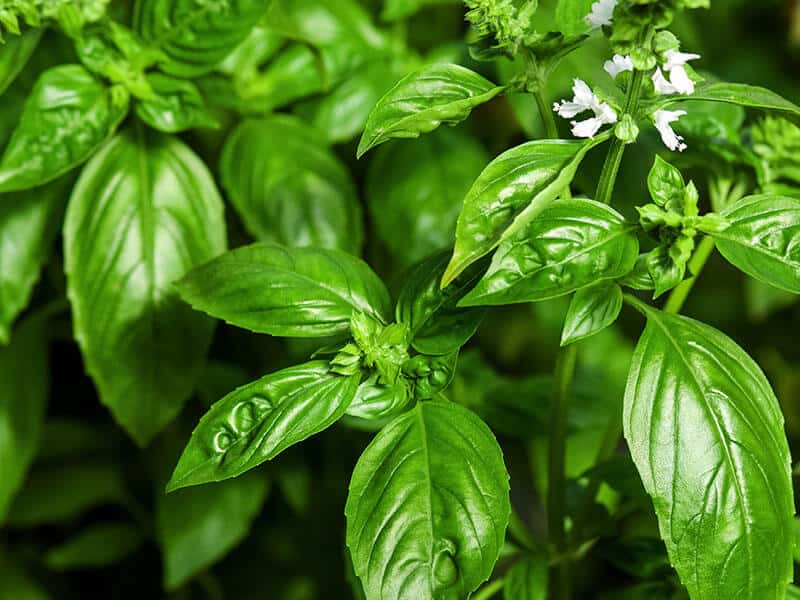
When it comes to Thai basil substitutes, the first option that comes to my mind is sweet basil, also known as Italian basil. Sweet basil almost allows you to duplicate the flavor of Thai basil. With aromatic herby flavor, you can use it in most dishes calling for Thai basil.
In Western cuisine, sweet basil works its best in pesto and some other sauces. Therefore, there is nothing wrong with using it in your Thai sauces and recipes. Note that since sweet basil has a sweeter and milder taste than Thai basil, you should use a larger amount.
To be more specific, take 1.5 tablespoons of sweet basil to replace 1 tablespoon of Thai basil. Remember to add it at the end of the cooking as this alternative is easy to lose its texture during the long cooking process.
Note: In case you want to replicate the closest flavor of Thai basil by sweet basil, combine it with mints or cilantro.
2. Holy Basil (Tulsi)
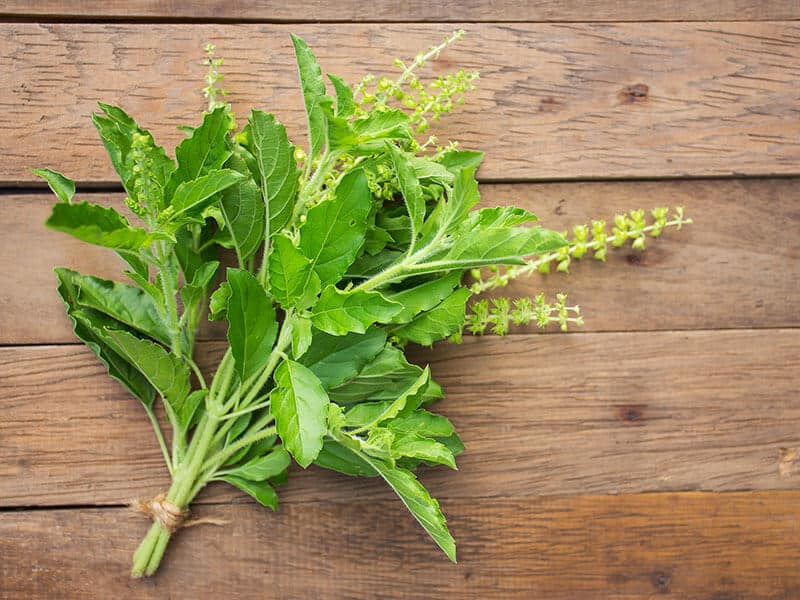
Holy basil (Tulsi) is commonly used in India. Despite coming from a different species (Ocimum tenuiflorum), it is also a little member of the Lamiaceae family as Thai basil. Holy basil brings you a quite similar taste to Thai basil. However, there are some differences.
This herb has a more peppery flavor with a note of clove. Most Thai home cooks use holy basil for its characteristic spiciness. That’s the reason why it also has another name, called “hot basil” in Thailand.
Holy basil works well in Taiwanese braised eggplant, Thai basil chicken, tofu, and all other stir-fries dishes. And don’t forget to cook them before serving. This alternative will taste quite bitter when eaten raw.
Just use the same volume (1 tablespoon of Thai Basil equals 1 tablespoon of holy basil) as you do with Thai ones.
Note: Holy basil lacks sweetness. You can mix with some sweet basil to achieve a subtly sweet flavor of Thai basil.
3. Tarragon
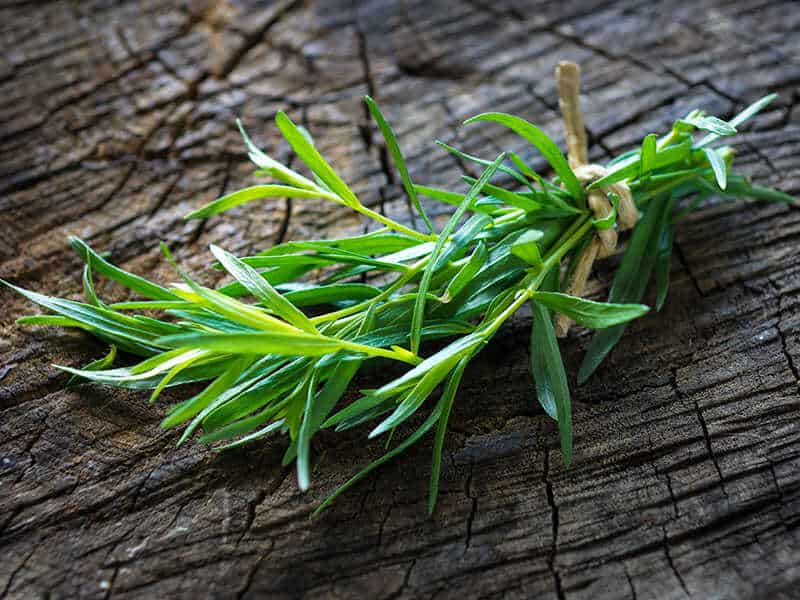
Tarragon, particularly French tarragon, is also a good pick for Thai basil replacement. This herb is belovedly named as “king of herb” by the French. Compared to Thai basil, it has an elegant, dedicated, and mild taste with the presence of both anise and licorice flavor.
Moreover, you can realize a spicy undertone as well. The perfect recipe for tarragon as a substitute for Thai basil is salads, chicken, poultry, and fish dishes. Also, soups are not a bad treat.
Tarragon’s taste is very light. As a result, you can alternate 1 tablespoon of tarragon leaves with 1 tablespoon of Thai basil leaves.
4. Star Anise
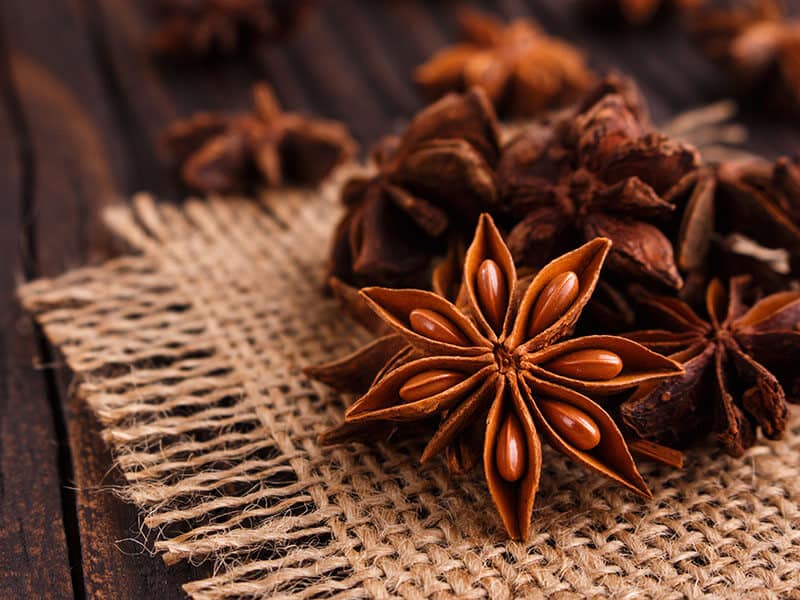
Don’t mistake star anise with anise seeds. They are two separate things. Star anise is harvested from an evergreen tree found popularly in Vietnam and China. It brings an intense and extremely fragrant smell with the domination of licorice flavor.
Due to sharing the same licorice note, it is a great alternative for Thai basil. If you are going to use it, add it in spice mixes or broths and stews. Anise star goes well with meat; then, don’t hesitate to use it in meat recipes.
Again, keep in mind that star anise is much spicier and stronger. Only use a half tablespoon of ground anise to alternate 1 tablespoon of Thai basil. This condiment can overpower your dish if you accidentally lose control.
Star anise plays a significant role in creating a fragrant Vietnamese Pho broth! Watch this video to know more:
5. Fennel
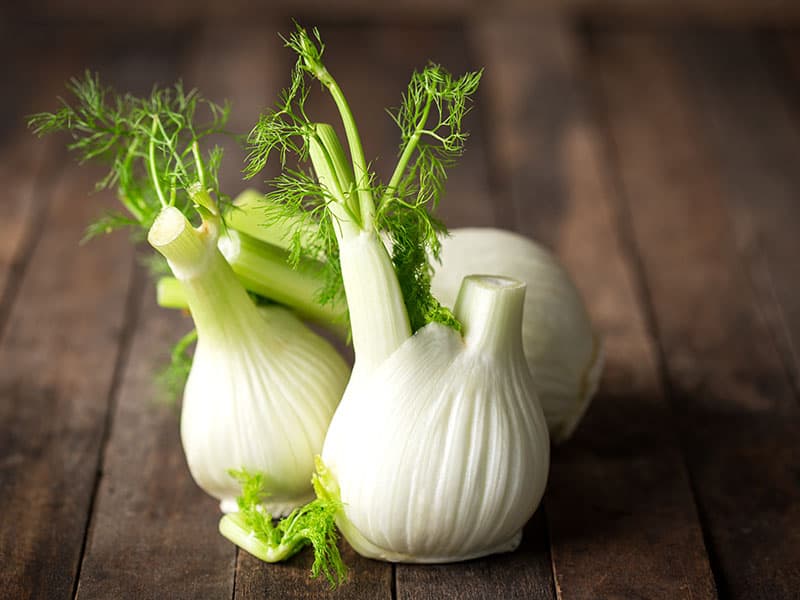
From their origin, it seems like there is no relation between fennel and Thai basil. One comes from the carrot family; one comes from the mint family. Nevertheless, fennel is known as having an anise-like cent.
It is the factor you need to look for when finding a substitute for Thai basil. Not only that, but fennel also offers you a mild and sweet licorice taste, which partly plays an important role in replicating your favorite Thai basil.
Either fennel bulbs or leaves can be used. You can add fennel leaves to your food as an additive condiment to boost the flavor. In terms of bulbs, use them in salads and other veggies or cooked recipes.
To check whether you will like it, start with 1/2 tablespoon of fennel leaves/bulbs first, then increase gradually as you want.
6. Mint Sprigs
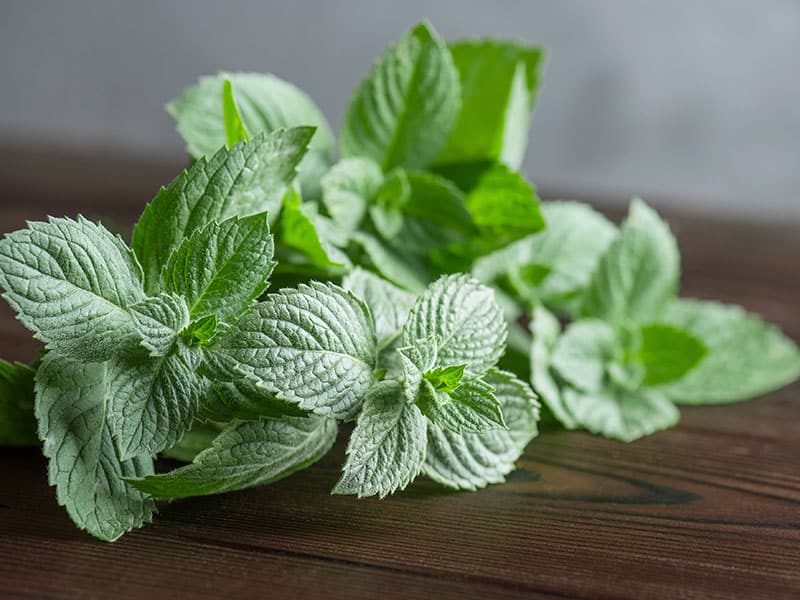
In terms of taste, mint is not a perfect choice for Thai basil substitutes. But if you want to add subtle spiciness and freshness to your food, mint sprigs are not a bad choice. This herb smell is delightful. It will not overwhelm your food.
You can sprinkle them on top of your dishes for flavor or garnish. Alternatively, squeeze and extract the extract, or chop them to mix with other spices and ingredients.
Mint sprigs are perfect companions for salad, sauces, lamb meat, poultry, and many other meat dishes. They even can be added to drinks too. If you decide to apply them in your recipes, simply use a similar formula.
For every tablespoon of Thai basil, use 1 tablespoon of mint sprigs.
Note: As I mentioned above, don’t forget to mix mint sprigs with some sweet basil to have the most similar taste.
7. Lemon Basil
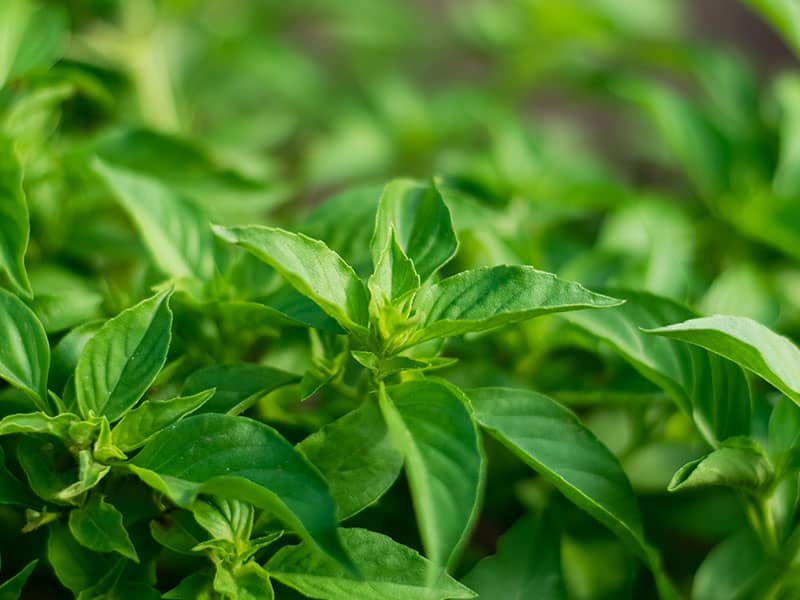
Another good candidate for the position of Thai basil substitute is lemon basil, also called Lao basil. Thanks to the same family background, lemon basil can help to save your dish when the Asian market is suddenly out of Thai basil.
Lemon basil is not as spicy and peppery as sweet basil and holy basil. Instead, it is lighter in taste and brings up a tangy and citrusy, and anise flavor. Besides, this alternative can go well with other aromatic herbs such as ginger, garlic, mints, and basil of course.
What about its best companions? Well, you should use lemon basil in soups, stews, or curries, or all the stir-fried dishes that call for Thai ones.
Plus, lemon basil is not a popular choice for many people. So, for sure, you need to adjust the portion yourself. Start with a small amount to figure out whether it is your taste.
8. Oregano
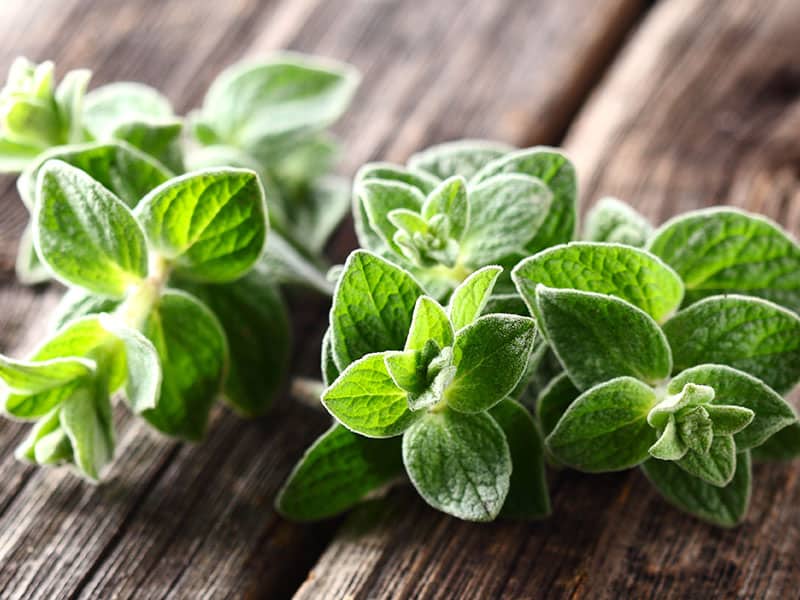
Oregano is a familiar herb for almost all Mediterranean citizens. It is not a wrong pick in case you want to add a spicy and peppery tone to your food.
Compared to Thai basil, oregano has a more pungent and robust flavor. It is spicier than Thai basil. In addition, for those who love the earthy and minty scents, oregano absolutely can meet your needs. You can receive a light, bitter taste when trying this plant as well.
Because of the stronger taste, don’t add too much oregano. In other words, take a small amount first, then increase step by step to achieve the most ideal flavor.
Note: Use oregano in your salad, roasted, grilled, fried meat, and fish.
You should see the video below:
9. Cilantro
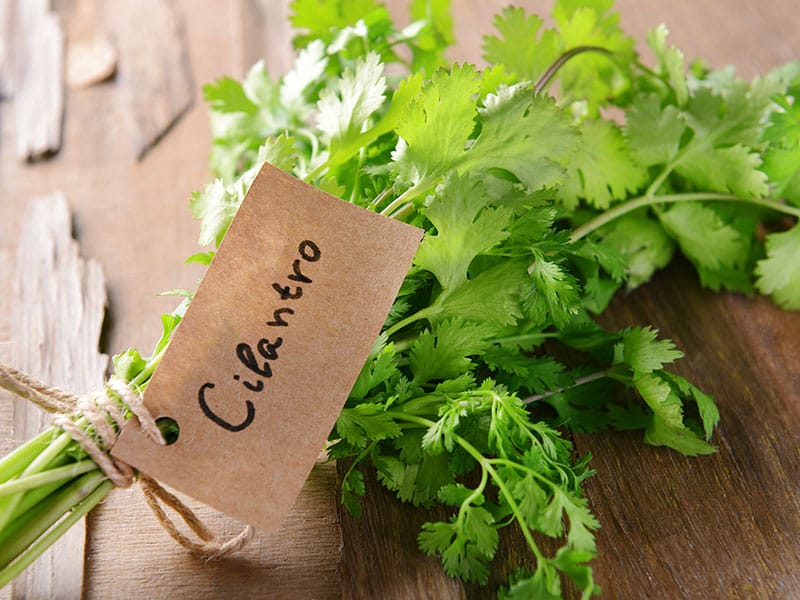
Cilantro may be a bad option for cilantro haters, but for cilantro lovers, this replacement is a gift for you! Though many people say this herb tastes like soap, cilantro is still a perfect balance between the spicy and citrusy flavor of lemon basil.
Besides, cilantro is also a healthy plant that offers various benefits, such as protecting your brain, fighting against infections, lowering blood sugar, and promoting the digestive system. (2)
Plus, this alternative especially works well in curries, soups, stews, rice dishes or can be used in meat rubbing too. About the suitable volume, take 1.5 tablespoons of cilantro to substitute for 1 tablespoon of Thai basil.
10. Spinach
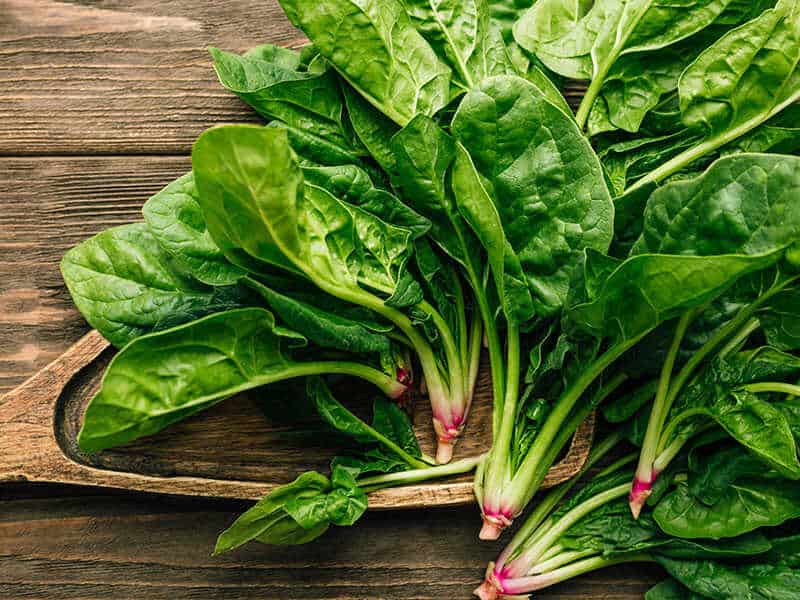
In case you want a safe option that will not ruin your dishes when you unluckily add a large amount to the food. For me, spinach is the most subtle alternative compared to all the choices in this list.
With the juicy and crunchy texture, spinach will not make you feel disappointed once it participates in salad, sauces, stir-fried, and vegetable dishes. Additionally, you can even make separate dishes with only spinach.
For a mouth-watering plate, replace 1 tablespoon of Thai basil with 2-3 tablespoons of spinach leaves.
11. Thyme
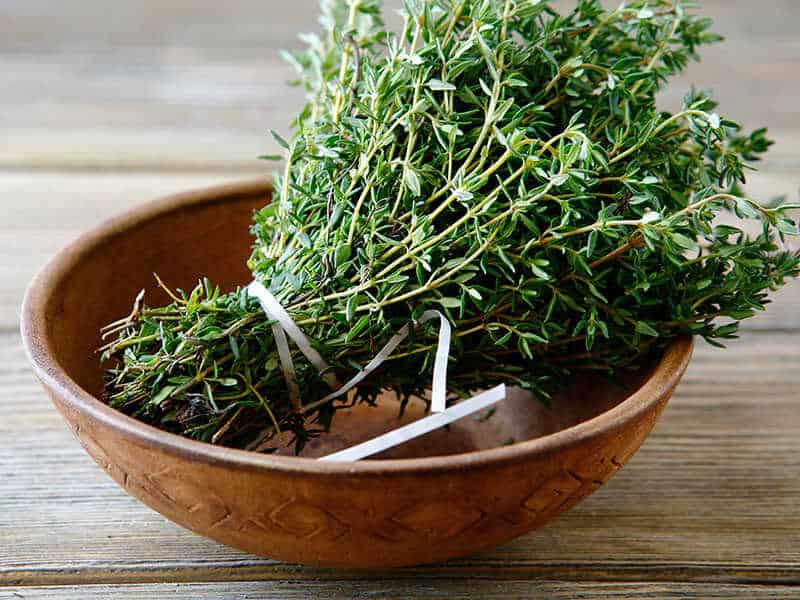
Personally, I will only use thyme to replace Thai basil in case I cannot find all of the 10 options above. But everything has its reason. The reason I put this herb into my Thai basil substitutes is the minty and spicy flavor that thyme brings up to my plate.
You cannot get a spicy level as when you use basil or oregano. Nonetheless, an average spicy and herby taste will not be out of your league. And a hint of warm and earthy flavor will be a bonus for you.
Remember: thyme is the queen in almost all kinds of soups. If you are going to prepare a soup requiring the fragrant taste of Thai basil, consider using this replacement. As for the appropriate portion, start with a smaller amount, then add more if necessary.
FAQs
These frequently asked questions below are an addition. Don’t forget to check them out. You may find the answers to all of your remaining questions.
Consider Carefully: Right Recipes – Good Flavor!
I’m happy that you can reach this far. Thai basil is a lovely and really heartful condiment. It will be a pity if you can not have them in your favorite dishes. But give other options a chance. I believe that you definitely can create another perfect version.
And one more thing: Use the substitutes selectively! They only work their best once they are put into the right place. You know, everything all depends on your choice. I really do hope that you can figure out the most suitable replacements for your beloved recipes.
Now, thank you so much for visiting my post. If you find my Thai basil substitute list helpful, don’t forget to let me know by leaving a comment in the section below. I really appreciate all your concerns.
References
- Thai basil – Wikipedia. En.wikipedia.org.
- Lauren Panoff. 8 Surprising Health Benefits of Coriander – Healthline. 2019.

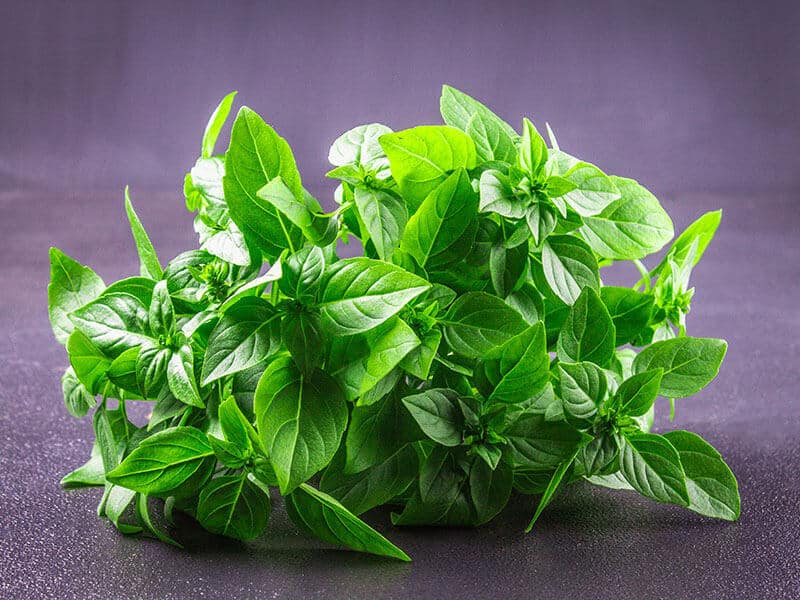
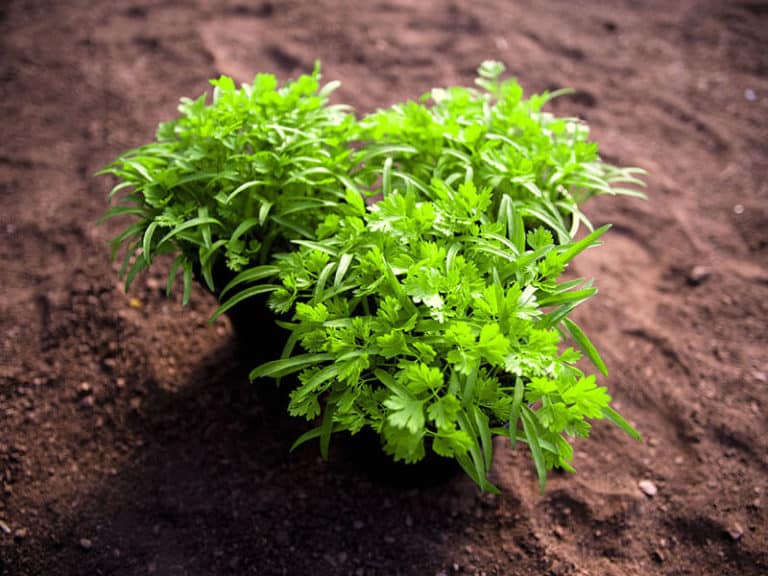

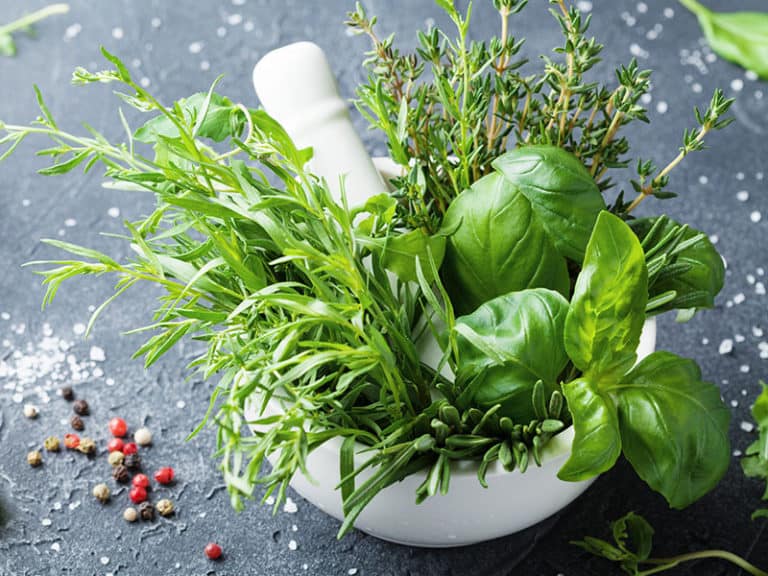
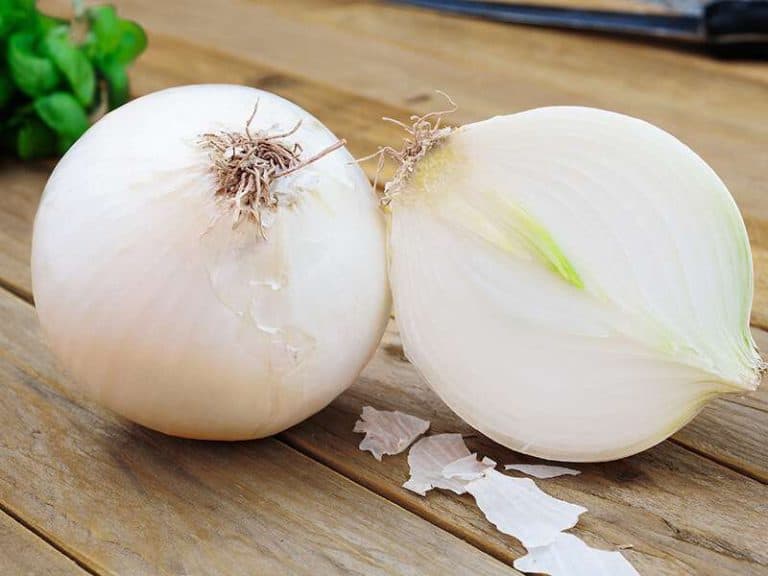

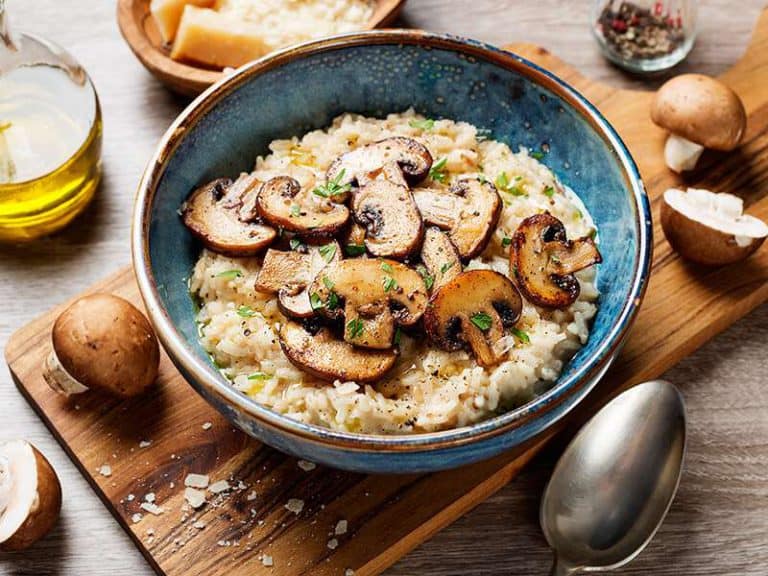
Amanda Collins
Founder and Senior Culinary Editor
Expertise
Culinary Arts and Management, Food Journalism and Critique, Recipe Development and Testing, Global Culinary Traditions, Sustainable Food Practices
Education
Institute of Culinary Education (ICE), New York, NY
Program: Diploma in Culinary Arts
Focus: Intensive hands-on training in culinary techniques, recipe development, and kitchen management, preparing students for professional roles in the culinary industry.
Monroe College, New Rochelle, NY
Program: Associate in Applied Science in Culinary Arts
Focus: Practical culinary skills, including cooking techniques, menu planning, and kitchen operations, with an emphasis on hands-on experience and industry standards.
Amanda Collins is a seasoned chef and food editor with a deep love for global flavors. Trained at the Institute of Culinary Education and Monroe College, and with over 15 years in the culinary field, Amanda has refined her skills in kitchens worldwide. Her background in food studies gives her a unique ability to share both recipes and the cultural stories that shape them.
As senior culinary editor at thebreslin.com, Amanda’s work brings authentic dishes to life, inviting readers to explore new flavors and techniques from around the globe. Her approachable style makes it easy for anyone to bring a bit of the world’s cuisine into their kitchen.